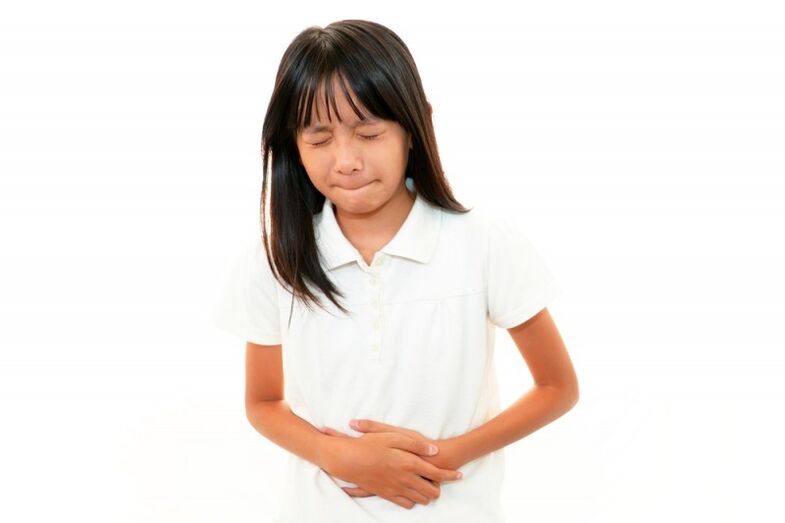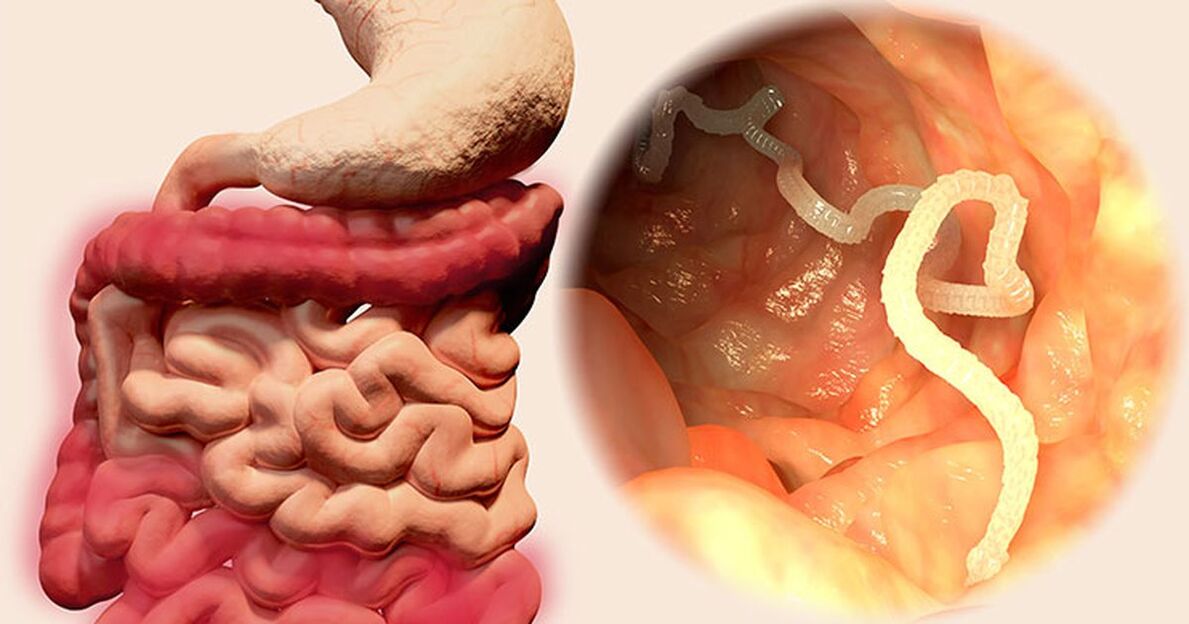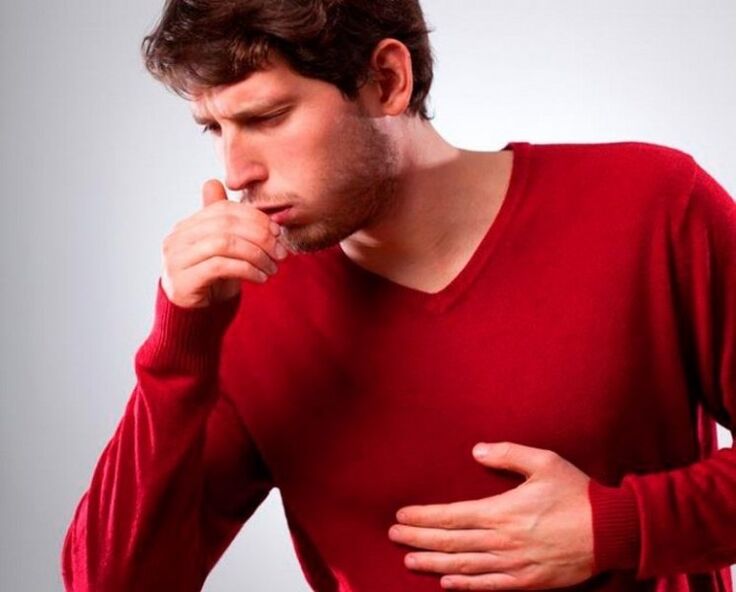
The human parasite lives in any of its organs and systems. These organisms enter the body from the environment and are carried throughout the body by the bloodstream. There are a large number of parasites that can live in the human body. All of them threaten human health and cause negative changes in the work of agencies.
Parasites in humans. Signs to identify worms in humans are very obvious and latent. Obvious manifestations include "unreasonable" weight loss, pallor (anemia of the skin), chronic fatigue, and nocturnal pruritus in the anal canal. These manifestations are well known and are manifestations of contamination.
How can you get worms?
Parasites in humans. To protect yourself, you need to know 4 ways of spreading and infecting eggs by eggs:
- Through land and water - geohelminthiases. They grow in sand, soil and water, then enter the human body and start laying eggs there. Furthermore, the eggs of this worm go to the outside with feces and wait in the wings to infect new people. Eating unwashed fruits and vegetables, dirty hands, and dust on food can lead to helminth infections in humans. Some parasite eggs enter the human body through the skin of the feet and ankles.
- Through direct contact. Worms in pets and humans are transmitted by hand contact, games, and shared activities.
- Through the use of contaminated food of animal origin - biological helminth infection. Eating raw and poorly processed meat (barbecues, bacon, preserves, homemade toys) and fish (sushi, dried fish, braised fish) poses many risks. There is a possibility of intestinal infections and helminthiasis.
- With insect bites. This type of infection is quite rare. These include enterocolitis, cantariasis, and fascioliasis. Do not confuse parasitic eggs with insect larvae, which also deposit under animal and human skin (eg fruit fly larvae).
The main mechanisms of the spread of worms
- Soil, sand and other soils are the most fertile habitats for worm eggs. Fruit trees are in constant contact with the ground. When harvesting, green vegetables and fruits come into contact with workers' hands, the dust of vegetable shops and trucks. Under such conditions, the food contaminated with the parasite has very high eggs. Therefore, it is necessary to thoroughly rinse plant-based products under running water, then rinse with boiling water. You should be especially vigilant in the countryside, where pets walk around the yard and then into the house. It is not difficult to imagine what kind of sewage a dog or cat can bring into the house after a night walk. Flies and cockroaches are also carriers of helminth eggs. When sitting on food, insects can infect your food. Any contact with soil and sand can lead to the entry of parasites into the human body. Therefore, it is necessary to wash your hands thoroughly, especially under the nails. This especially applies to children.
- From one person to another. This infection mechanism is highly effective. For example, pinworms lay eggs at night in the area around the anus. A child, in a state of sleep, scratches the place where the eggs are laid, because the itching begins there. Thousands of eggs fall on clothes, on beds, in the morning on doorknobs and on all things that a little nervous touches in the morning, even before washing hands and face. As a result, the whole family is at risk of infection.
- When in contact with water. The open waters contain a large number of worms. Bathing and accidentally swallowing water poses a serious risk of infection

Children are much more susceptible to helminth infections than adults. The reason is that the child's body is poorly protected (a newly formed defense mechanism), and the child is actively exposed to the outside environment. Parents must make an incredible effort to teach their children the basic rules of personal hygiene.
A baby under the age of 6 is at high risk of infection. According to statistics, about 95% of children under 4-5 years old are infected with worms. Therefore, special care should be taken to avoid.
Most worms are inside the body, only there they lay eggs, after a certain time they will die. For example, pinworms live 6-8 weeks, roundworms - up to 1 year. The number of parasites in the body increases only when there is the penetration of new eggs from the outside.
Treatment allows you to get rid of worms much faster and prevents the laying of eggs in the intestine. Children with helminth infections are unlikely to recover without medication. New eggs will constantly enter the oral cavity, adding to the ranks of the adults in the child's body.
Signs of worm infestation
Cases of helminthic invasion are not uncommon, in which diseases of internal organs are aggravated, there are diseases that were previously asymptomatic. These are considered hidden signs. A person is taken to treatment for many diseases, and the cause is left unattended. At the same time, therapy did not bring results. Here are examples of such cases:
Infectious diseases due to reduced immunity
Parasites, staying in the human body, consume many nutrients and release toxic substances. Such cases significantly reduce the patient's immunity. Exacerbation of chronic diseases, various inflammatory processes in the nasopharynx can begin. Conventional treatment for sinusitis or stomatitis is meaningless. It is important to rule out the cause.
In girls and women, endometritis, vulvovaginitis, and vaginitis of various etiologies can often begin.
General discomfort due to body poisoning

The more severe the penetration of helminths into the patient, the more toxic the parasite secretes. This has adverse effects on the health and nervous system of adults and children. An example of this is migraine, dizziness, joint pain. To overcome the nausea, the person took painkillers, but the pain returned after a short time: the cause of the illness was ignored.
In children, nervous system disorders are accompanied by irritability, apathy and aggression.
If your child is starting to have trouble sleeping, talk in dreams, have nightmares, or skip school, it's time to start preventing heartworm disease.
Allergic reactions, skin diseases
Parasites in humans. The waste products of worms are considered allergens. Skin reactions (rash, itching, rash, peeling of the skin) are minimal symptoms that are likely to occur when the allergy begins. There is a possibility of general body reactions: exacerbation of asthma, rhinitis, cough. Sometimes a pinworm infestation is accompanied by thinning and hair loss, cracked heels, and peeling of the nails.
Digestive disorders
Depending on the severity of the infection, symptoms can range from mild to severe of the disorder. From mild nausea and diarrhea, to chronic flatulence, constipation, vomiting, navel pain and hypoplasia. Tissue worms do not affect the gastrointestinal tract as much as intestinal parasites.
In which organs can the parasite live?
Human parasites are divided into two categories, corresponding to the active site in the donor body.
- Cavity worms - worms that live in different parts of the digestive tract. There are about 100 types of intestinal parasites, and there are several dozen species for each intestinal segment. The small intestine is ready to accept roundworms, roundworms, tapeworms, and other less common "brothers". The small intestine "will share living space" with pinworms, dwarf tapeworms and others. Medical documents describe cases when a person is infected with several types of parasites simultaneously.
- Tissue - worms are localized in organs, tissues and even in the blood. Modern medicine successfully copes with paragonimiasis (lungs), cysticercosis (brain), echinococcosis (liver) and filariasis (lymphatic vessels). Some worm larvae move through the body through the circulatory system and randomly attach to any organ. If multiple eggs are inserted, the whole body can become infected.
The symptoms of worms depend on the type of parasite
Symptoms will be different for different types of worms in humans. It is also worth considering the duration and strength of the parasitic infection, the general condition of the patient before the infection. The table below summarizes the main symptoms of the presence of worms in humans by their type.
| Type of parasite (disease) | Mode of infection | Symptom | Time of onset of symptoms |
| Pinworms (enterobiasis) | With food of plant origin. | Itching around the anus at night, parasites in the stool, brief sharp pain above the navel. | 2-3 days after infection |
| Vlasoglav (trichocephalosis) | With contaminated food processed in unsanitary conditions. | Symptoms are manifested only in severe invasive: diarrhea, abdominal pain, anorexia, appendicitis. In children, body growth may be slowed and even rectal prolapse may occur. | Some week |
| Wide tapeworm (diphyllobothriasis) | When eating infected river fish. | This parasite can live up to 25 years inside the body of an infected person. Mechanical damage to the intestines, vitamin deficiency, intestinal obstruction, body toxicity, allergies. | Some week |
| Roundworm (hookworm) | When walking barefoot on charged ground. | Itching, edema of feet, feet in places where parasites invade. Cough, with phlegm, injures the bronchi and lungs. Weakness, dizziness. Menstrual cycle in women is disturbed. Men are impotent. | Some days |
| Roundworm (ringworm) | With food of plant origin. | Intestinal pain, peritonitis, bronchitis, pneumonia, liver disease, pancreas. May cause asphyxiation by crawling from the gastrointestinal tract into the esophagus or respiratory tract. | About 3 months |
| Trichinella (Trichinosis) | Poorly processed pork and fat. | Intermittent nausea and heartburn, diarrhea. | 2 days |
| Liver flukes and giant flukes (small liver flukes) | Food and vegetable water. | Fever, dry cough, loss of appetite, abdominal pain. | 2-4 weeks |
The symptoms of helminthiasis are as varied as the parasitic pathogens, life cycles, routes of entry, migration, and preferred localization.
The general symptoms of parasitic diseases are explained by the fact that with the penetration of helminths, the parasite suppresses a person's own immunity, contributes to the development of inflammatory and autoimmune processesTranslate. General symptoms related to intoxication, death of parasites, vital activity and their reproduction, manifest as weakness, vivacity and mood swings, decreased academic achievement and performance, memory and learning ability in children.

Pain in the right hypogastrium, bitter taste in the mouth, and jaundice may indicate parasitic disease localized mainly in the hepato-duodenal region (the liver and drainage ducts). At the same time, the patient may experience nausea and vomiting.
Human parasites have been observed in association with damage to the liver and the ducts of the hepatobiliary system, for example, when infected with the flatworm - opisthorchis. This helminth enters the body of the final owner - a person - when eating poorly prepared fish of several varieties (carp).
Symptoms associated with damage to the liver and the conduits associated with the hepatobiliary system are observed, for example, when infected with the flatworm - opisthorchis.
The disease is endemic and has a special distribution area. In order to transmit pathogens, the larvae of the parasite must go through a complex cycle with the change of the host (molluscs of a certain species, fish of the carp family).
Parasites in humans. Usually, with many diseases caused by parasites, there will be skin manifestations such as skin itching, rash, excessive scratching, atopic dermatitis, eczema and other skin diseases that progress. Skin processes are not always associated with helminthic invasion and have been unsuccessfully treated by dermatologists.
Importantly, with helminthiasis, any organ or tissue can be affected, and patients are often concerned with headaches, joint pain (joint syndrome), and upper respiratory tract complaints. and below. Usually, persistent cough, frequent SARS, pharyngitis, laryngitis, difficulty breathing are related to inflammation, an important site in the pathogenesis is parasitic infection (helminths).
Giardiasis and its features
Giardiasis is a protozoan disease in which the pathogen exists in vegetative and cystic forms. Giardia infection occurs when the cyst is ingested, is very persistent in the environment and can persist for a long time in the environment (soil, food, water, various objects).
1 ml of feces can contain millions of lamblia cysts, which when placed in a favorable environment can transform into a vegetative form. In the human gut, a vegetative, motile form is formed from cysts within hours with flagellate attachments between the cells of the intestinal epithelium, where the pathogen finds itself in a favorable environment with a carbohydrate food intake. sufficient, is the preferred substrate. for lamblia.
Giardia in a favorable environment are binary divided (into two parts), and soon their number increases many times. In addition to the intestine, the vegetative forms of lamblia affect the hepatobiliary system (bile duct, gallbladder).
Symptoms of giardiasis are related to physical weakness, poor academic performance, weakness, combined with signs of intestinal and hepatobiliary damage. The course of giardiasis and other parasitic diseases is largely related to features of the immune response. Intestinal, gastrointestinal form - a common form of giardiasis. Pathogen endotoxins can affect the nervous system, which explains the presence of many common extra-gastrointestinal symptoms.
Roundworm disease
Another common and widespread parasitic disease is ringworm. This helminthiasis occurs more often in children, but in adult patients it often causes more complaints and symptoms. Many chronic inflammatory diseases, as well as somatic diseases, can begin with a parasitic invasion and grow stronger in the presence of various parasites (including roundworms).
Often, children and adults carrying roundworms will develop chronic colitis, enteritis, bronchitis, even a serious disease such as bronchial asthma can develop, other allergic processes (atopic dermatitis, eczema, rhinitis, psoriasis) may be of assistance.
Parasites in humans. Roundworms enter the stomach when the eggs are swallowed. After entering the upper part of the alimentary canal (stomach), the larvae, freeing themselves from the capsule shell, migrate into the blood vessels, following the bloodstream they enter the alveoli of the pulmonary system, therebycause the patient to cough, cough and other phenomena of bronchitis.

Usually such a condition is considered a viral infection, an exacerbation of chronic bronchopulmonary disease and often associated, in this case, with larval migration.
After coughing up roundworm larvae and bringing pathogens with phlegm into the pharynx, they are swallowed with saliva, then re-entered the stomach, and then transferred to the intestine, where there are favorable conditions for the parasite to multiply and develop. .
In the human intestine, the roundworm feeds on its contents, turning into sexually mature individuals (females 50 cm, males 20 cm). During growth and life activity, as well as as a result of larval migration, parasites have a mechanical and toxic effect on the human body.
In the process of growth, survival, egg laying and maturation, pathogens have the effect of suppressing the body's immunity, which can cause diseases of the lungs, intestines and other parts of the gastrointestinal tract. , anemia. Roundworms can live in a person's intestines for up to a year.
Antihelminthic drugs
It is possible to medically treat a person with drugs with the help of a large number of modern anthelmintic drugs, prescribed by a specialist.
Because some drugs have no effect on larvae and eggs, and there is a high risk of reinfection (self-infection with pinworms), the course of treatment should be repeated after 2-3 weeks. Among the folk remedies, the most effective are those that have been tested since ancient times - using pumpkin seeds and tansy herbs.
Pumpkin seeds are a good wormer known for a long time, it is best to buy unshelled seeds, peel them yourself, store and eat a thin film between the seeds and the shell, 300 g per day should be eaten. morning. . within an hour, previously chopped and mixed with honey or jam. Then do not eat for 3-4 hours and do the enema, you can repeat this treatment after 2 weeks.
Interesting facts about human parasites
- According to WHO, about 3 billion people are infected with roundworm every year. 1. 2 billion people have intestinal worms, 0. 9 billion people have hookworms, 0. 7 billion people have trichocephalosis. And these are official statistics only!;
- In European countries, one third of the inhabitants carry intestinal parasites in the body;
- With severe invasions, a person loses up to 500 ml of blood per day. From here disease and chronic fatigue originate;
- Some parasites reside in the brain, eyeballs, and bone marrow and can live there for up to 30 years. For example, cytisteryk;
- The female roundworm lays 240, 000 eggs per day. Repeated reinfection will not allow a person to be cured the first time. Repeated courses of treatment are required;
- The waste products of parasites - poisons and poisons - destroy human health 24 hours a day;
- Some tapeworms grow up to 12 meters in length. Sometimes it threatens with the blockage of the human intestine;
- Pumpkin seeds contain cucurbitins, which help heal worm infections without the need for medication. Pumpkin seeds are often given to children for disease prevention;
- Treating your pet every 3 months is optimal. So you will save yourself and your children from parasites;
- Worm eggs can wait in wings on doorknobs for up to 6 months;
- An infected dog will disperse eggs of the parasite by breathing within a radius of 5 meters;
- In order not to be digested in the stomach and intestines, worms and their eggs secrete substances that are resistant to protective enzymes;
- Trichinella does not lay eggs, but produces ready-made worms. Therefore, it is not possible to detect the presence of this parasite under laboratory conditions;
- The most effective test for detection of invasion is considered an enzyme immunoassay. Gauze, stool analysis may not provide reliable information.
In conclusion, it should be said that the regular prevention of helminth infections, even with inexpensive drugs (they are also considered the most gentle), helps to protect the whole family. Responsible for hand and body hygiene, carefully preparing food for use. Children and pets should be constantly monitored for parasites.























